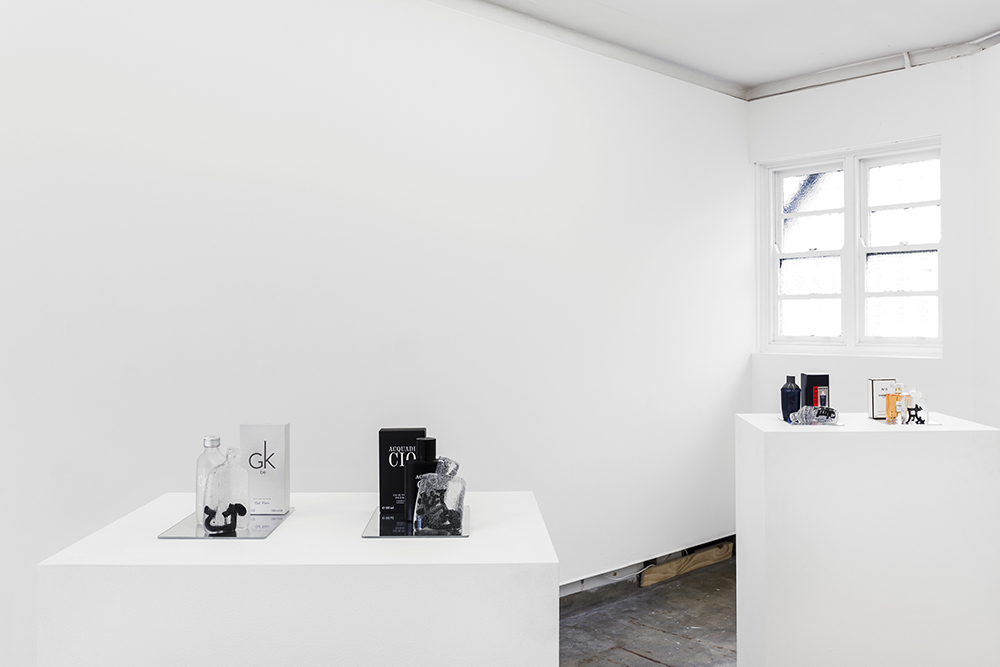
Chun Yin Rainbow Chan | Shanzhai Perfumes | SAME SAME | Perfumes bottles, cardboard packaging, jelly wax, mirrors, plasticine, aroma diffuser | Photograph by Document Photography
My work explores the intersections between mass culture, diaspora and globalisation. I am interested in the counterfeit as a unique aesthetic category that re-reads the uncanny. My works investigate how mimetic objects and symbols, such as bootlegs or fake luxury goods, problematise the socially-regulated impulse of consumerist desire.
The catalyst for my research into counterfeits was Shanzhai Ad Campaign, a multimedia work that I created for Ouroboros, curated by Justin Shoulder. I appropriated several uploaded images of knock-offs and turned them into sleek advertisements. From the punkish connotations of the Shanzhai1 phenomenon, to horrific reports of unsafe foods and structural corruption, China has been mythologised as the ‘crazy’ criminal pirate. The discourse around China’s rapid modernisation and intellectual property rights infringements deeply intrigued me.
In Same Same, curated by Tom Smith, I presented Shanzhai Perfumes where jelly replicas of fake designer perfumes were arranged into a retail display. To me, there was an equivalence between the fluidity of the marketplace and the abject wobbliness of jelly. The counterfeit as a sign is similarly wobbly with its transgressive, shape-shifting nature. Over time, each jelly degraded and became sad droopy figures. I like to imagine that as the jelly began to sag and lean on the perfume bottle from which it was moulded, they were engaging in a slow dance.
My practice often reframes Chinese traditions in incoherent ways. In Broken Vessel of 1996, Western pop songs are reimagined as Cantonese ‘bootleg’ versions. Since immigrating to Australia in 1996, English has fiercely supplanted Cantonese to become my dominant language. Probing into the impacts of assimilation, I thought the inconsistencies of translation apps seemed like an apt metaphor for my experiences. The lyrics are processed into Cantonese but remain faithful to the original melody. This, in turn, generates numerous tonal errors and render the already-imperfect Chinese translations completely absurd.
Currently, I am working on a photographic series, Gloss. On a trip to Guizhou Province in China last year, I came across an amazing pair of Shanzhai shoes. Design features from Versace, Prada, Louis Vuitton and Chanel products, were hybridised into a new, bold platform sandal. Walking in these made me feel frivolous and inspired a counterfeit persona. Gloss connotes a polished finish, a smooth surface — but it also means to give a misleading and deceiving explanation. Our world is full of glossy screens, where haptic technologies collapse the virtual and the real, where the surface has become the material. I want to ask how the counterfeit and its image might embody the contradictions of gloss; at once attempting to be lustrous but drowning in self-deceit.
- Shanzhai, originally denoting a ‘mountain stronghold’ for bandits, refers to the counterfeiting of Western brands by Chinese companies. ↩









